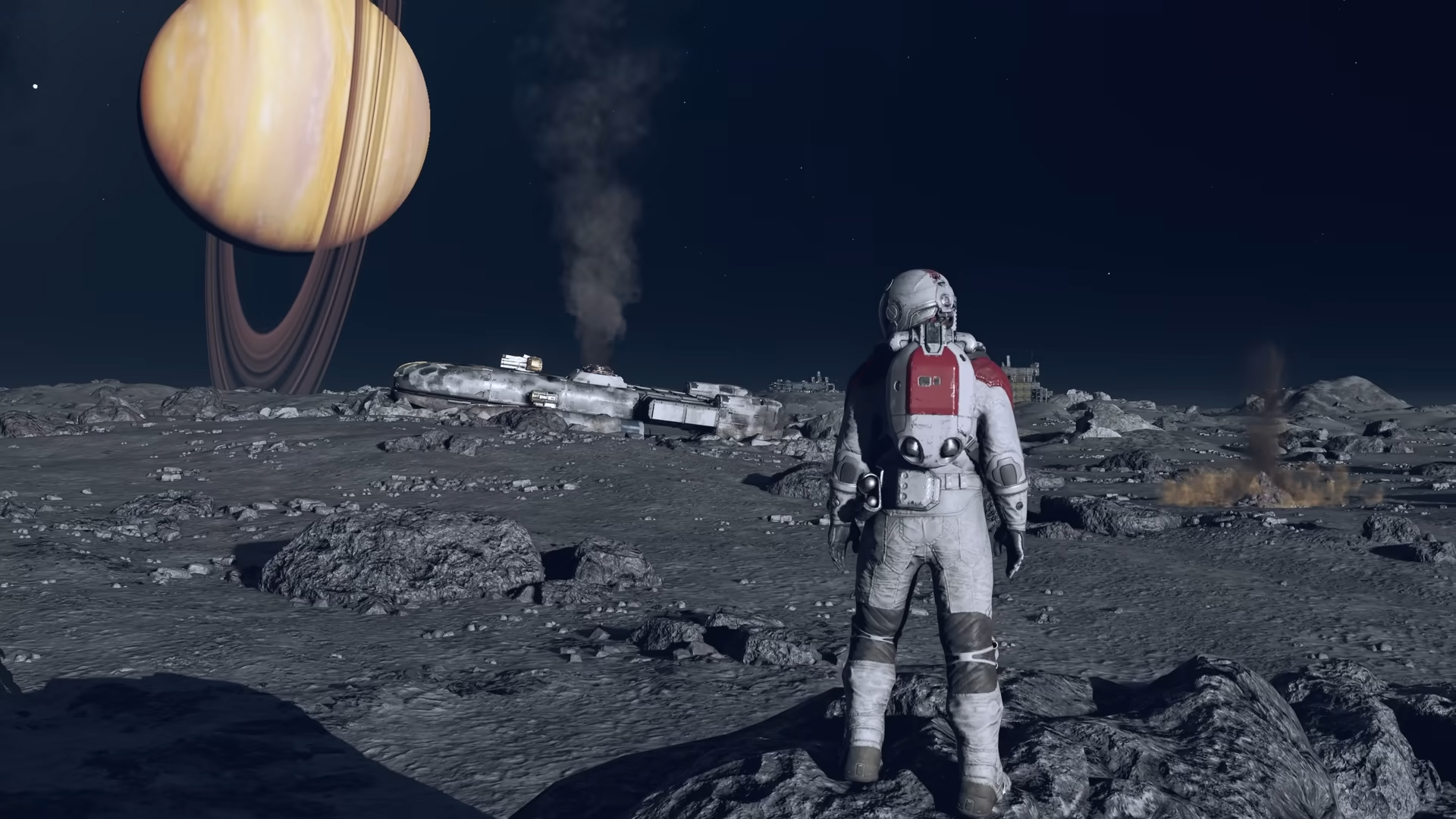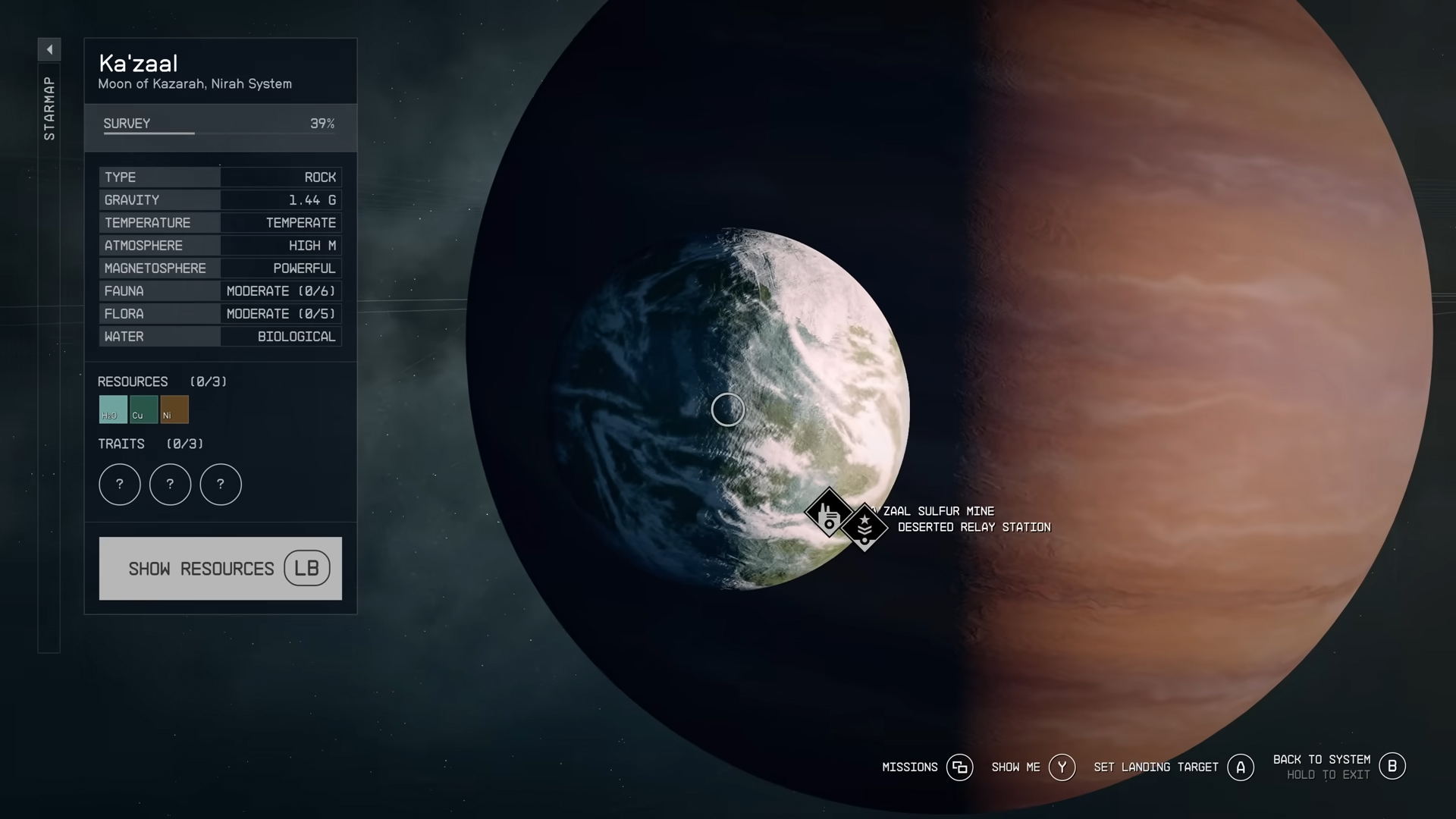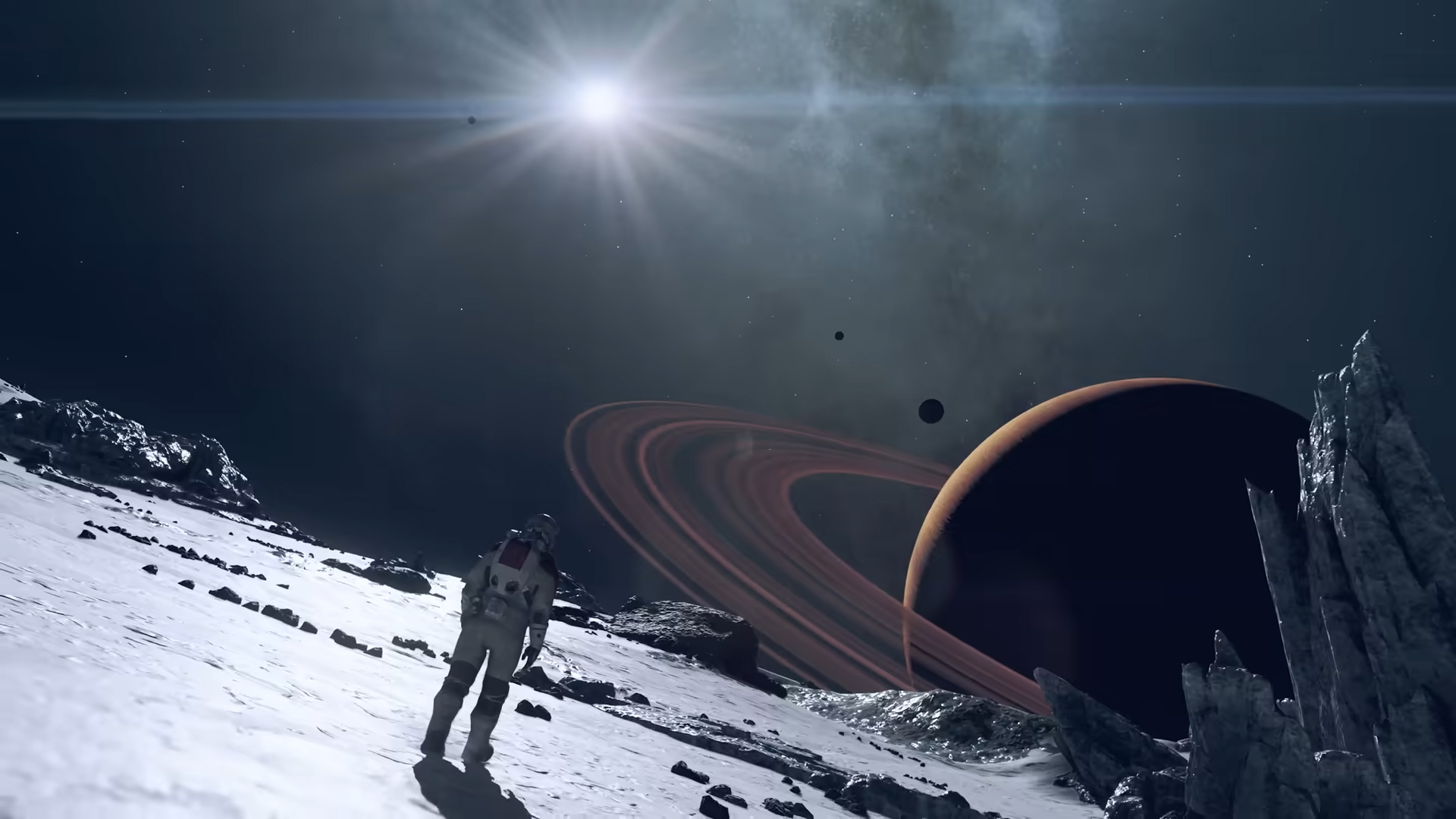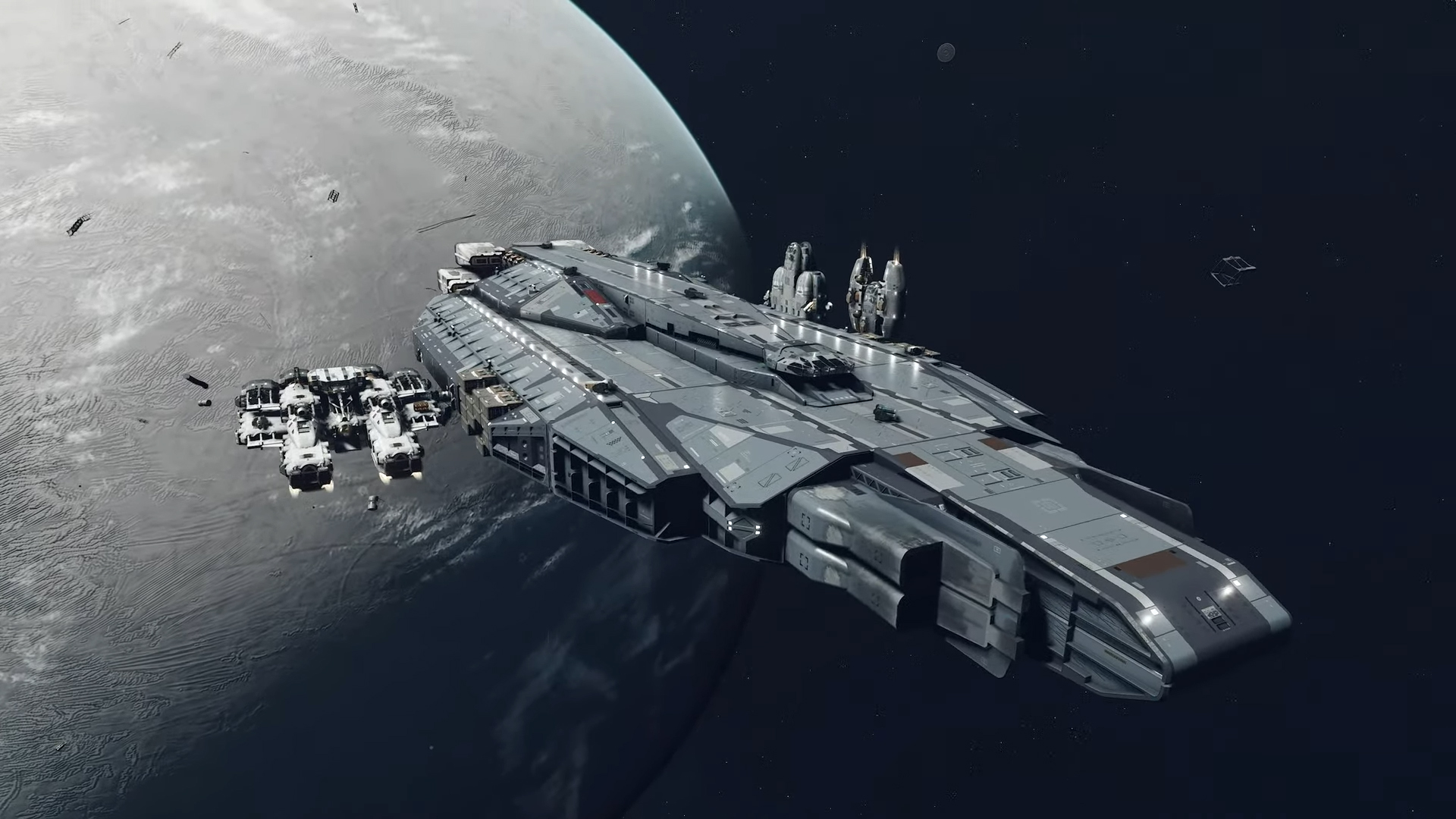
Is it possible the most chilling sound an astronaut can hear is not a silent scream in the vacuum of space but a yawn from inside their ship? The interstellar segments of last month's Starfield Direct certainly had me reaching for the pillow, as Bethesda's Skyrim space RPG gave us an image of the final frontier more drowsy than daring.
Exciting things were happening planetside. Futuristic metropolis New Atlantis is crowded with towering high-rises and chatty NPCs, while partner city Neon looks to be a debaucherous cyberpunk den riddled with intrigue and crime. Elsewhere, space pirates, killer robots and quasi-religious zealots stand ready to throwdown in impressively vertical jetpack-laden shootouts, bizarre flora and fauna can be discovered across the surface of 1,000 alien worlds, and blank planetoids function as canvases on which to construct modular personal outposts. In other words, there's a lot going on when you're on the ground. Things to do, places to explore, and people to invariably shoot in the head with tricked-out energy rifles.

When we get in our spaceship and rocket upwards, the ground slips away and the familiar Bethesda template that things have been closely hewing to up until now goes with it. Space is a place for dogfighting, hailing passers-by to board their cruisers, and stopping off at floating sci-fi garages for shopping sprees. It's supposed to sell the feeling that the wide expanse of space is bustling with activity. People really do live in the wilderness of the future, waiting to encounter heroic adventurers who they can hand quests and sell tricked-out wares. At least, that seems to be the idea.
All of this extraterrestrial excitement takes place against a backdrop that's the visual equivalent of a SpaceX enthusiast's desktop wallpaper.
All of this extraterrestrial excitement takes place against a backdrop that's the visual equivalent of a SpaceX enthusiast's desktop wallpaper. Gigantic planets sit motionless among a sea of pinprick light, asteroids occasionally float by your ship, and the light of the nearest star glares like a flare. It's all part of Starfield's NASA-punk aesthetic, Bethesda's term for its true-to-life vision of the future that's grounded in both reality and the optimism of the 1960s space race. "Our mission was to convey the wonder and majesty of space exploration," said art director Istvan Pely. "To evoke the romance of the golden age of early space flight."
Yet I'm not sure Starfield's semi-realistic direction can meet the lofty heights it's aiming for. Back when the space industry was led by national bodies rather than billionaire egos, its hopeful romanticism didn't come from what we found above our atmosphere—mainly dusty grey rocks on the moon, and dusty red rocks on Mars—but from the wide-eyed speculation of what could be waiting beyond our view. The mystery was of unexplored worlds possibly teeming with secrets; places and things we hadn't even glimpsed. After all, as Voyager 1's famous Pale Blue Dot photograph showed over 30 years ago, though the field of stars above our heads might be unfathomably large, most of it amounts to a whole heap of nothing—empty space between the odd point of interest.

And so Starfield's NASA-punk design looks to have ended up at a strange sort of overlap between the impressively flashy and naturally dull. The utopian streets of New Atlantis and gangways of Neon give us a glimpse of what our colonial spacefaring future might one day look like. Weird weapon designs and astronaut suits show how things could develop on the final frontier. And the modular ship design system effectively lets us bring the Space Shuttle out of retirement to spruce up as we please. The joy of the NASA-punk style comes from connecting the dots, seeing how the familiar astronaut get-ups and space capsules of today might one day transform for extraterrestrial voyages.
As locations go, an airless, unoccupied void just isn't all that interesting.
But the place through which those voyages must pass will necessarily remain the same. The bit between all the planets and the moons and the satellites, and anything else of interest up there, will stay empty. For the most part, space will look the same now as it will in 100 years' time—albeit with a bit more orbital debris flying about—and it never looked that exciting to begin with. As locations go, an airless, unoccupied void just isn't all that interesting.
It's a common problem among space-based games, which have regularly struggled to make the stuff in what is essentially an absence of stuff seem interesting. Like Starfield, Everspace 2 lets you zip lightyears across the universe at hyperspeed to avoid slogging through the vast expanse of nothing. Even No Man's Sky, which largely ditches real-world simulation for colourful sci-fi worlds, does its best to push you out of space and onto planets where more interesting animals and plantlife can be found. Others like Alien: Isolation have used the emptiness to their advantage. As you're hunted across the Sevastopol, the outside vacuum that you might occasionally peek through a porthole is a reminder of just how stranded you are—and the horror you're stranded alongside.

Starfield doesn't have that luxury. A gung-ho adventure across the galaxy, exploration is baked into its foundations. The idea of taking Skyrim to space at first seemed magical, but it risks losing much of what made that fantasy game sparkle. Its open world was pitted with dungeons, bandit camps, roaming mammoths, and various optional but enjoyable secrets never far off the beaten track. It was a landmass carefully formed to invite players to experiment and make their own fun by playing with the world around them.
In Starfield, that land is lost and replaced with a blank void decorated with hand-crafted, curated novelties that give a semblance of life in an otherwise barren expanse. It's a clever idea, but I worry much of the original charm of Skyrim will be lost. As vast as Starfield's sky might be, and as interesting as its planets will appear, it will have to work hard to show us the magic of space. Right now, I'm more interested in keeping my boots on the ground.







